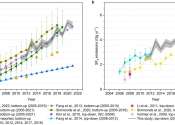A new method for storing and processing hydrogen chloride
A research team at Freie Universität Berlin has successfully developed a method for storing and electrolyzing gaseous hydrogen chloride in the form of an ionic liquid. The method allows the hydrogen chloride created as a ...









